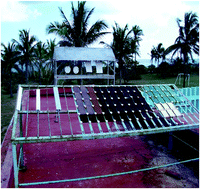Spent tyre valorisation: new polymer modified asphalts for steel protection in an aggressive marine environment
Abstract
Waste valorisation is a topic that has been in the limelight since environmental concerns have promoted the better use of raw materials. Annually, millions of tons of waste tyres are generated worldwide and represent a great environmental threat; these waste tyres could be used in the development of novel materials for effective protection against corrosion. In this work, the performance of 8 new polymer modified asphalt (PMA)-based coatings made up of spent tyres was evaluated on steel samples. Accelerated tests (salt spray, humidity and accelerated aging), as well as adherence and impact studies at the laboratory scale, were carried out prior to a two-year exposure investigation in a very highly aggressive marine zone. Analysis of the results revealed the suitability of most of the PMA compositions in terms of anticorrosion protection, adherence and impact resistance. The suitability of these PMA compositions was validated by applying them in automobiles subjected to an aggressive marine environment.


 Please wait while we load your content...
Please wait while we load your content...